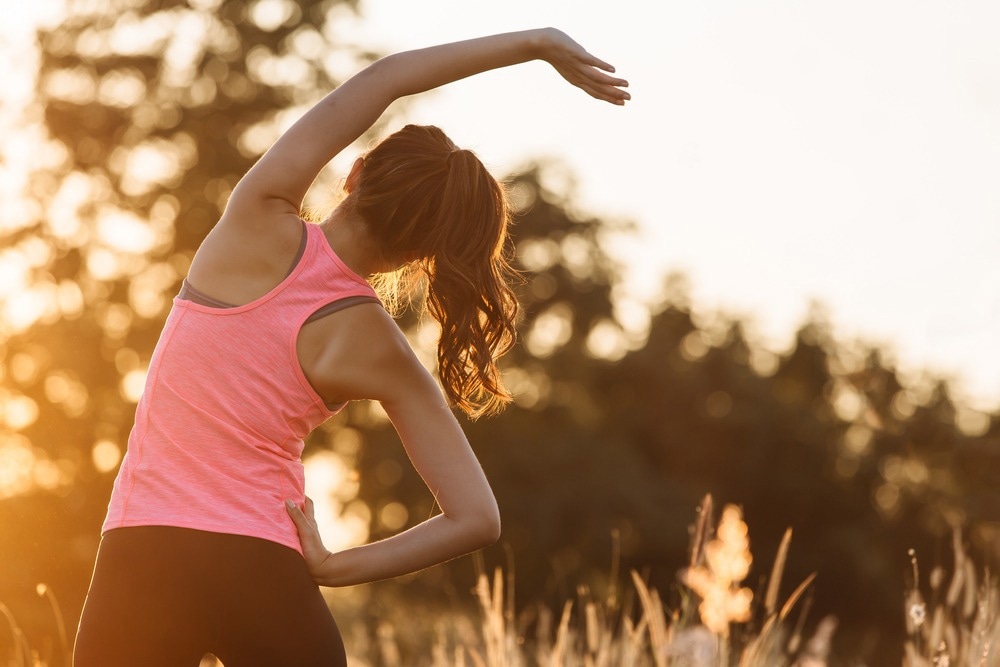In a recent study published in JAMA Network Open, researchers explored the possible link between pre-pandemic activity levels in American adults over 45 and their likelihood of developing and being hospitalized for coronavirus disease 2019 (COVID-19). Their findings indicate that being more physically active may have been protective against developing any or severe COVID-19.
 Study: Prepandemic Physical Activity and Risk of COVID-19 Diagnosis and Hospitalization in Older Adults. Image Credit: GP PIXSTOCK/Shutterstock.com
Study: Prepandemic Physical Activity and Risk of COVID-19 Diagnosis and Hospitalization in Older Adults. Image Credit: GP PIXSTOCK/Shutterstock.com
Background
Studies suggest that physical activity (PA) reduces the risk of developing many health conditions, including cardiovascular disease (CVD), type 2 diabetes, and cancer, as well as mortality from these causes. Scientists believe that PA is beneficial because it delays the natural immunosenescence that occurs with age, reduces systemic inflammation, and boosts immunity.
A significant gap in this body of work is the protective role PA plays when it comes to infectious diseases such as COVID-19. Being physically active may confer benefits by boosting the activity of neutrophils and natural killer cells or through the modulation of inflammatory processes.
It may also optimize stress responses and improve neurocognitive functioning. Another mechanism through which protection may operate is through increases in the salivary antibody immunoglobulin A.
While some research has found that people who are more physically active may have fewer severe COVID-19 outcomes and be less likely to be hospitalized, admitted to intensive care, or die, no studies have assessed whether these findings apply to older adults. This has public health implications as age is known to be a risk factor for developing severe COVID-19.
About the study
In this study, researchers followed American adults over 45 who reported their PA levels before the pandemic, collecting information on their infection and hospitalization. They hypothesized that more active adults would be less likely to be infected or hospitalized.
PA levels were assessed by asking respondents to report how many minutes per week they had spent in activities such as running, jogging, walking, or aerobic exercise in the previous year. They were also asked to note the number of flights of stairs they climbed each day.
In follow-ups, individuals were asked to provide information about their COVID risk factors, symptoms, tests and diagnoses, treatment, and illness severity. People who had not reported PA levels before the pandemic were excluded.
Social and demographic variables such as age, race, ethnicity, sex, education, and income were collected. Lifestyle-related risk factors such as alcohol consumption and smoking status were also included. Medical history and self-reported weight and height were also taken.
Data analysis included statistical testing, multivariate logistic regression models to estimate infection and hospitalization odds ratios, and sensitivity analyses.
Findings
The cohort for the study included 61,557 people. The average age of the cohort was 75.7 years at the end of 2019, and nearly 71% were female; slightly over 20% of the respondents said they were inactive, and 68.5% were sufficiently active based on activity guidelines. Nearly 90% of respondents were non-Hispanic White while 7.5% were Black or African American. Never-smokers and those with higher income and education levels were more likely to be sufficiently physically active.
The follow-up found that 5890 people had been diagnosed with COVID-19 and that there were 626 hospitalizations. Regardless of which controls were used, the regression models found that people with sufficiently high levels of PA were significantly less likely to be infected and hospitalized than those who had reported being inactive.
Sub-group analyses revealed that these results appeared to be driven by the benefits of PA to women but not men. However, there was no significant difference between the risks to insufficiently active and inactive people.
Conclusions
These findings indicate that insufficient PA does not provide benefits in terms of COVID-19 infection and hospitalization; sufficient levels of activity are needed to be protective against severe infection and hospitalization.
Another interesting result is that women may benefit more from being physically active than men, which could be because there are sex-based physiological differences in their respiratory systems. However, since being male has been identified as a risk factor for severe COVID-19, future studies should look at short-term and long-term outcomes in this and other groups.
The authors noted several limitations to their results, including that their sample may have been affected by volunteer bias, where the initial sample was more likely to contain sufficiently active people. Information inaccuracies are also a common issue in self-reported data.
The incidence of COVID-19 may have been underestimated due to asymptomatic cases. Another issue was that PA levels may have changed during the pandemic, but this was not factored in. Further studies are needed to validate and strengthen these findings.
Journal reference:
- Prepandemic physical activity and risk of COVID-19 diagnosis and hospitalization in older adults. Munoz-Vergara, D., Wayne, P.M., Kim, E., Lee, I., Buring, J.E., Manson, J.E., Sesso, H.D. JAMA Network Open (2024). doi:10.1001/jamanetworkopen.2023.55808
https://jama.jamanetwork.com/article.aspx?doi=10.1001/jamanetworkopen.2023.55808